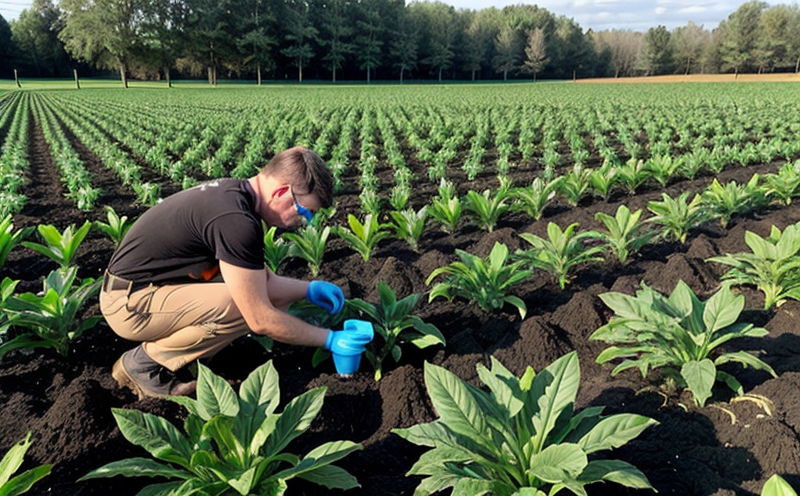Nickel Content Testing in Fertilizers
Testing nickel content in fertilizers is a critical process that ensures product quality and compliance with international standards. Nickel, although not commonly found in fertilizers, can have implications for plant health, soil chemistry, and environmental impact when present in high concentrations.
Nickel is one of the transition metals and plays a role in various biological processes within plants but can also be toxic if excessive. Therefore, accurate testing helps to maintain optimal fertilizer formulations that support sustainable agricultural practices without causing harm to crops or soil ecosystems.
The testing procedure typically involves sample preparation which includes grinding the fertilizers into fine particles for homogeneity and then dissolving them using appropriate solvents depending on the matrix of the fertilizer. The dissolution process can vary based on whether the fertilizer contains organic components, salts, or other complex matrices.
Once dissolved, nickel content is measured either through flame atomic absorption spectrophotometry (FAAS) or graphite furnace atomic absorption spectrophotometry (GFAAS). These methods are highly sensitive and precise for detecting trace amounts of metals like nickel. The choice between FAAS and GFAAS depends on the concentration range expected in the fertilizer samples.
FAAS is suitable for higher concentrations, while GFAAS offers greater sensitivity ideal for lower levels typically found in agricultural products. In some cases, Inductively Coupled Plasma Optical Emission Spectrometry (ICPOES) or Mass Spectrometry (ICP-MS) can also be used to achieve the necessary accuracy and precision.
Acceptance criteria for nickel content in fertilizers vary by region but generally align with international standards such as ISO 17266, which sets guidelines for soil testing including heavy metals. Compliance ensures that products meet regulatory requirements set forth by bodies like the European Commission or USDA.
Quality assurance is paramount during this process to ensure accuracy and reliability of results. A list of key steps includes:
- Detailed record keeping of all procedures followed
- Regular calibration of instruments used for testing
- Use of certified reference materials (CRMs) for validation
- Maintenance and verification of laboratory environments to prevent contamination
By adhering strictly to these practices, laboratories can provide reliable data which is essential not only for meeting legal standards but also for maintaining the trust of customers who rely on consistent product quality.
Quality and Reliability Assurance
Maintaining quality in fertilizer production is essential not only for economic reasons but also to ensure environmental safety. Our laboratory adheres strictly to international standards such as ISO 17266, which sets out best practices for soil testing including heavy metal content.
Our commitment to reliability includes rigorous calibration of all analytical instruments, regular verification of lab conditions, and the use of certified reference materials (CRMs). These measures ensure that every result we provide is accurate and can be trusted by our clients. By upholding these standards, we contribute to maintaining a sustainable agricultural industry.
Environmental and Sustainability Contributions
Incorporating nickel content testing into fertilizer production has significant environmental benefits. Accurate testing ensures that fertilizers contain only the necessary amounts of nickel, minimizing potential harm to soil ecosystems. This supports sustainable agricultural practices by promoting healthier soils and crops.
By adhering to strict quality control measures and using advanced analytical techniques like GFAAS or ICP-MS, we help producers create products that are not only effective but also environmentally responsible. Our work contributes to the broader goal of sustainable agriculture worldwide.
Competitive Advantage and Market Impact
Accurate nickel content testing provides a competitive edge in the agricultural sector by ensuring product quality and compliance with international standards. This allows manufacturers to confidently meet regulatory requirements, enhancing their reputation among consumers.
By offering reliable data on nickel levels, our laboratory supports producers in creating safer and more effective fertilizers. This trust translates into better market positioning and increased customer satisfaction. In an increasingly environmentally conscious world, the ability to provide such detailed information is a key differentiator.





